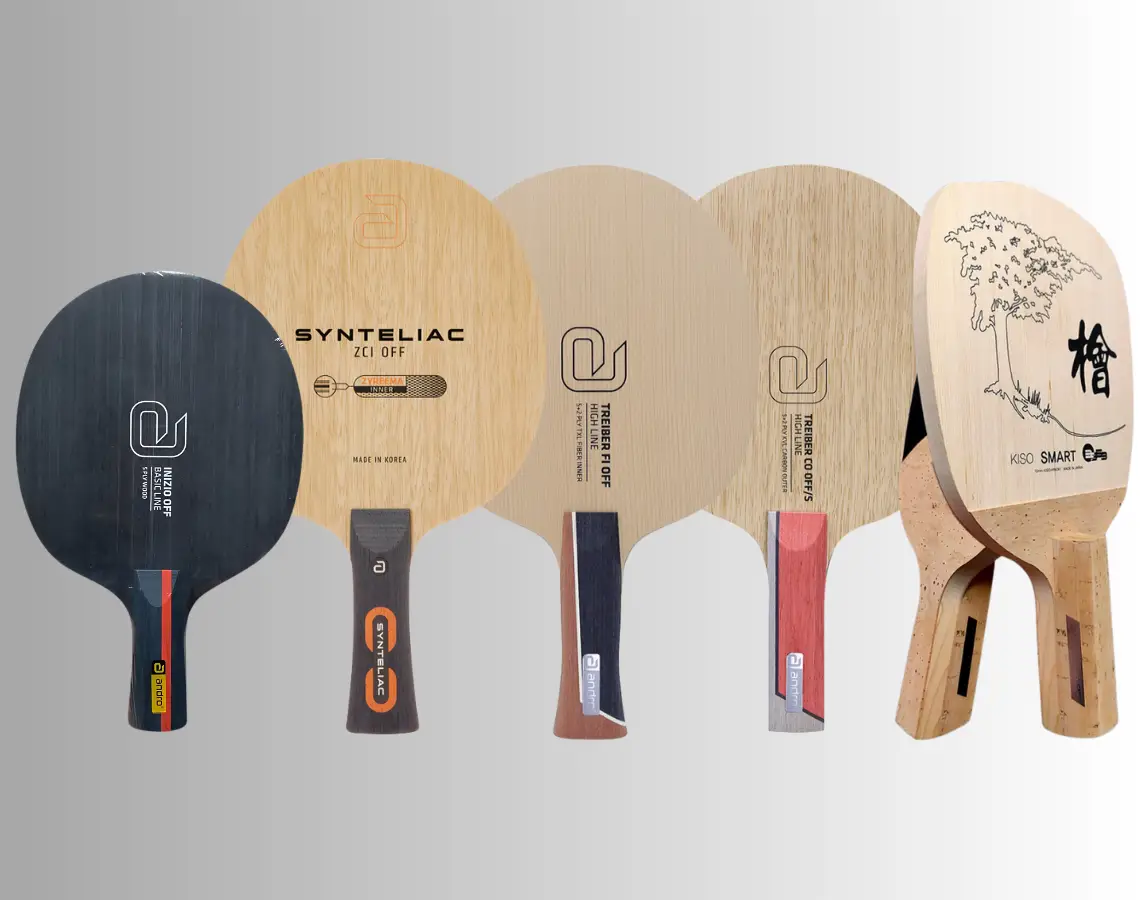Address
304 North Cardinal
St. Dorchester Center, MA 02124
Work Hours
Monday to Friday: 7AM - 7PM
Weekend: 10AM - 5PM
Address
304 North Cardinal
St. Dorchester Center, MA 02124
Work Hours
Monday to Friday: 7AM - 7PM
Weekend: 10AM - 5PM
Your blade defines the foundation of your game in table tennis. Discover how to choose the right blade based on speed, control, handle type, and your unique playing style in this beginner-friendly guide.

When building your ideal table tennis racket, the blade is the foundation. It defines how the ball feels at contact, how much speed you can generate, and how much control you’ll have in your shots. Choosing the right blade, especially as a beginner or intermediate player, can greatly affect your performance and confidence.
This guide will help you understand the different types of playing styles and how to match them with the right blade characteristics so that you can play smarter and more effectively.
Many players focus heavily on rubbers, but the blade contributes just as much, if not more, to how your shots behave. The blade’s composition, thickness, and stiffness influence:
Whether you’re attacking, defending, or doing a bit of both, your blade should amplify your strengths, not work against them. 3 Main Playing Styles in Table Tennis:
Offensive / Aggressive Style
Players who prefer to stay close to the table or mid-distance and hit powerful forehands or backhands. Prioritize speed and direct power. Ideal blades: 7-ply wood or carbon blades with low dwell time and crisp feedback. Examples: Andro Treiber, Yinhe V-14 Pro
All-Round / Balanced Style
Combine elements of spin, block, control, and occasional smashes. It requires a blade with versatility and moderate speed. Ideal blades: 5-ply all-wood or soft-carbon blades with good feel and control. Examples: Andro Timber 5, Barna Winner Allround
Defensive / Control-Oriented Style
Focus on blocking, chopping, and positioning to force errors. Opt for blades with high dwell times, large sweet spots, and slower speeds. Examples: Lion Defence Pro, Lion Aratron Def
Choosing the right blade is about more than just picking a name brand. Here are 5 critical aspects you should evaluate:
Ply Composition (Number of Layers)
Blades are made of multiple layers of wood or synthetic materials, called “plies.”
Beginners are often better off starting with 5-ply for improved feedback and a learning curve.
Carbon vs All-Wood
If you’re an intermediate player looking for more speed, carbon could be the next step.
Blade Speed Rating
Manufacturers usually rate blades from DEF (Defensive) → ALL (All-Round) → OFF (Offensive) → OFF+ (Very Fast).
Don’t be swayed by pure speed control winning matches.
Handle Type (Grip Style)
Choosing the right handle type is all about comfort, grip preference, and how you hold the racket. There are two main grip categories: shakehand and penhold, each with its handle styles.
Shakehand Grip Handles
(Used by most players globally)
Penhold Grip Handles
(More popular in East Asia, especially China and Japan)
| Handle Type | Style | Best For |
|---|---|---|
| FL (Flared) | Shakehand | Beginners, forehand-dominant players |
| ST (Straight) | Shakehand | Flexible grip transitions |
| AN (Anatomic) | Shakehand | Natural fit in the palm |
| C-Pen (Chinese) | Penhold | Wristy, spin-based close-table attackers |
| J-Pen (Japanese) | Penhold | Strong forehand drive players |
Weight
Consider your physical comfort, lighter is better if you play close to the table or prioritize precision.
| Play Style | Blade Recommendation | Highlights |
|---|---|---|
| Offensive | Yinhe V-14 Pro, Andro Treiber | Fast, crisp feel, carbon core, power-focused |
| All-Round | Dr. Neubauer Phenomenon, Barna Winner Allround | Balanced speed & control, good for learning |
| Defensive | Lion Aratron Def, Sauer & Troger Firestarter Def | High control, ideal for passive or chop play |
Your blade defines the feel of your game. It should match your goals, skill level, and playing habits. Whether you’re a spin-lover, speed attacker, or tactical defender, there’s a blade out there that fits just right.